| TRAINEE LOGIN | | | EMPLOYER / BILLING LOGIN | | | CONTACT US |

What is WHMIS - The Facts
Here's what you need to know.

WHMIS stands for Workplace Hazardous Materials Information System and is a set of national standards created by Health Canada to ensure the safety of all Canadians surrounding work hazards, as well as sensitive and chemical substances.
WHMIS is implemented through workplace education programs, training that is now mandatory by law, as well as through key elements such as labeling of containers, providing safety data sheets, and effectively showing that standards are maintained and monitored.
An effective WHMIS helps workers to know the dangers of the job they are doing, and to know what to do in the case of an emergency.
In 2015 a new version of WHMIS was released and a staggered implementation was used to encourage all workplaces to communicate the new system. The deadline for the full application of the 2015 WHMIS is Dec. 1, 2018. This will bring Canada in line with the Globally Harmonized System of Classification and Labeling of Chemicals (GHS).
According to the government of Canada, the GHS is an "internationally consistent approach to classifying chemicals and communicating hazard information through labels and safety data sheets," (Canada.ca). It is the most advanced hazardous materials practices around the world and the standard internationally agreed-upon and managed by the United Nations. When countries trading with Canada, such as the United States and more, align themselves with one set of regulations, safety standards and work conditions improve to the benefit of all.
It is the responsibility of employers to know WHMIS and to ensure it is communicated to their employees. A company's own individual WHMIS program can be tailored to the needs of their field, but Health Canada requires that certain comprehensive aspects of WHMIS must be communicated. Where you are located within Canada can also impact what is required from different types of employers, according to each province or territory's agency for workplace safety and health.
Training employees may require knowing exactly what hazardous products are present in the workplace, where they are stored, and how they are used, handled or disposed of. Employees may need to know how to identify hazards and how to keep records on hazardous materials using safety data sheets. Workplaces may need to provide clear procedures for safety at all times and in emergencies.
Measuring the program and ensuring it is always up to date is also important as the amount of health and safety regulation and enforcement is steadily increasing. Employers may choose to review their WHMIS training program annually, or if workplace conditions or products change.
Legal responsibility rests with employers, but employees can help to share the duty of ensuring WHMIS is responsibly implemented. Participating in WHMIS training may be a requirement of employment and taking necessary steps to protect themselves, coworkers and the general population is an employee's duty to public safety.
An employee's training in WHMIS is generally not transferrable between companies, as each company may be implementing their own communication program. Workplace specific training should be available through your company if you will be directly handling, storing or disposing of hazardous materials.
If you don't see the training readily available to you, then it is appropriate to request it or request how you are expected to obtain it. Often online training can be delivered in a fraction of a workday at a fraction of the cost of other types of training.
Safeandcertified.com was formed in 2006 with expertise in working with educators and training professionals, creating large-scale databases and utilizing online technology. Through our online training programs, we provide help to HR professionals and managers to efficiently schedule, deliver and monitor the required WHMIS training.










